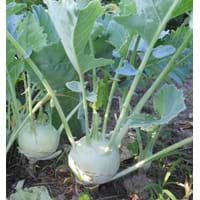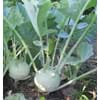Life Span
Annual or Biennial
Perennial
Origin
Western Europe
Southeastern Asia, Melanesia, Micronesia
Types
Not Available
Jackfruit, Breadnut, Figs
Number of Varieties
Not Available
Habitat
agricultural areas, gardens, Wet ground
Lowland evergreen rainforest, Riverine swamp forest
USDA Hardiness Zone
1-6
10-15
Sunset Zone
A1, A2, A3, H1, H2, 1a, 1b, 2a, 2b, 3a, 3b, 4, 5, 6, 7, 8, 9, 10, 11, 12, 13, 14, 15, 16, 17, 18, 19, 20, 21, 22, 23, 24
H2
Habit
Upright/Erect
Oval or Rounded
Flower Color
Not Available
Yellow green
Flower Color Modifier
Bicolor
Bicolor
Fruit Color
Not Available
Yellow, Green, Yellow green, Brown
Leaf Color in Spring
Green, Light Green
Dark Green
Leaf Color in Summer
Green, Purple
Dark Green
Leaf Color in Fall
Green, Purple
Dark Green
Leaf Color in Winter
Green, Purple
Light Green
Leaf Shape
Oval
Irregular
Plant Season
Not Available
Spring, Summer, Fall, Winter
Sunlight
Full Sun, Partial Sun
Full Sun, Partial Sun
Type of Soil
Loam, Sand
Loam, Sand
The pH of Soil
Neutral
Acidic, Neutral, Alkaline
Soil Drainage
Well drained
Average
Bloom Time
Not Available
Indeterminate
Tolerances
Drought
Drought
Where to Plant?
Container, Ground
Ground
How to Plant?
Seedlings
Grafting, Rooted stem cutting, Seedlings
Plant Maintenance
Medium
Medium
Watering Requirements
Keep ground moist, Use Mulches to help prevent water loss during hot and windy weather
Average Water Needs, Never Over-water, occasional watering once established, Water daily during growing season, Water Deeply
In Summer
Lots of watering
Lots of watering
In Spring
Moderate
Moderate
In Winter
Average Water
Average Water
Soil pH
Neutral
Acidic, Neutral, Alkaline
Soil Type
Loam, Sand
Loam, Sand
Soil Drainage Capacity
Well drained
Average
Sun Exposure
Full Sun, Partial Sun
Full Sun, Partial Sun
Pruning
No pruning needed in the early stages, Remove dead leaves
Prune every year, Prune if you want to improve plant shape, Remove branches, Remove damaged leaves, Remove dead branches, Remove dead leaves, Remove dead or diseased plant parts
Fertilizers
organic fertlizers, Potassium
20-20-20 amount, All-Purpose Liquid Fertilizer
Pests and Diseases
Alternaria Leaf Spot, Aphids, Cabbage looper, Downy mildew, Leaf spot, Mites, Red blotch
Red blotch
Plant Tolerance
Frost, Shallow soil
Drought
Flower Petal Number
Single
Not Available
Fragrant Bark/Stem
Yes
No
Foliage Texture
Bold
Coarse
Foliage Sheen
Matte
Glossy
Attracts
Aphids, Beetles, Flying insects
Birds, Not Available
Allergy
Digestive Problems, sneezing, Swelling in the face
allergic reaction
Aesthetic Uses
Not Used For Aesthetic Purpose
Not Used For Aesthetic Purpose
Beauty Benefits
For treating wrinkles, Weightloss
Good for skin, Promotes Healthy Hair, Removes dandruff, Speed hair growth
Environmental Uses
Food for animals, No fertilizer, pesticides, or herbicides needed
Air purification, Nesting sites for birds, Shadow Tree, Wildlife
Medicinal Uses
Anemia, Diabetes, Digestion problems, Increase fiber amount, Kidney Stones, Minerals, Weight loss
Cancer, cholesterol-lowering, Heart problems, High cholestrol, Immunity, Skin Disorders, Weight loss
Part of Plant Used
Leaves, Stem
Fruits
Other Uses
Can be made into a herbal tea, Used As Food, Used for its medicinal properties
Used As Food, Used for its medicinal properties
Used As Indoor Plant
No
No
Used As Outdoor Plant
Yes
Yes
Garden Design
Edible, Herb / Vegetable
Edible, Feature Plant, Fruit / Fruit Tree, Shade Trees, Tropical
Botanical Name
BRASSICA oleracea 'Dyna'( Gongylodes Group)
ARTOCARPUS altilis
Common Name
Kohlrabi
Breadfruit
In Hindi
नवलकोल
Breadfruit Tree
In German
Kohlrabi
Brotfruchtbaum
In French
Chou-rave
Breadfruit Arbre
In Spanish
Brassica oleracea gongyloides
árbol del pan
In Greek
Kohlrabi
αρτόδεντρο Δέντρο
In Portuguese
Kohlrabi
Árvore de fruta-pão
In Polish
Kalarepa
Breadfruit drzewo
Phylum
Magnoliophyta
Magnoliophyta
Class
Magnoliopsida
Magnoliopsida
Order
Capparales
Urticales
Family
Brassicaceae
Moraceae
Genus
Brassica
Artocarpus
Clade
Not Available
Angiosperms, Eudicots, Rosids
Tribe
Not Available
Artocarpeae
Subfamily
Not Available
Not Available
Number of Species
Not Available
Season and Care of Kohlrabi and Breadfruit
Season and care of Kohlrabi and Breadfruit is important to know. While considering everything about Kohlrabi and Breadfruit Care, growing season is an essential factor. Kohlrabi season is Not Available and Breadfruit season is Not Available. The type of soil for Kohlrabi is Loam, Sand and for Breadfruit is Loam, Sand while the PH of soil for Kohlrabi is Neutral and for Breadfruit is Acidic, Neutral, Alkaline.
Kohlrabi and Breadfruit Physical Information
Kohlrabi and Breadfruit physical information is very important for comparison. Kohlrabi height is 30.50 cm and width 30.00 cm whereas Breadfruit height is 2,600.00 cm and width 600.00 cm. The color specification of Kohlrabi and Breadfruit are as follows:
Kohlrabi flower color: Not Available
Kohlrabi leaf color: Green, Light Green
Breadfruit flower color: Yellow green
- Breadfruit leaf color: Dark Green
Care of Kohlrabi and Breadfruit
Care of Kohlrabi and Breadfruit include pruning, fertilizers, watering etc. Kohlrabi pruning is done No pruning needed in the early stages and Remove dead leaves and Breadfruit pruning is done Prune every year, Prune if you want to improve plant shape, Remove branches, Remove damaged leaves, Remove dead branches, Remove dead leaves and Remove dead or diseased plant parts. In summer Kohlrabi needs Lots of watering and in winter, it needs Average Water. Whereas, in summer Breadfruit needs Lots of watering and in winter, it needs Average Water.





